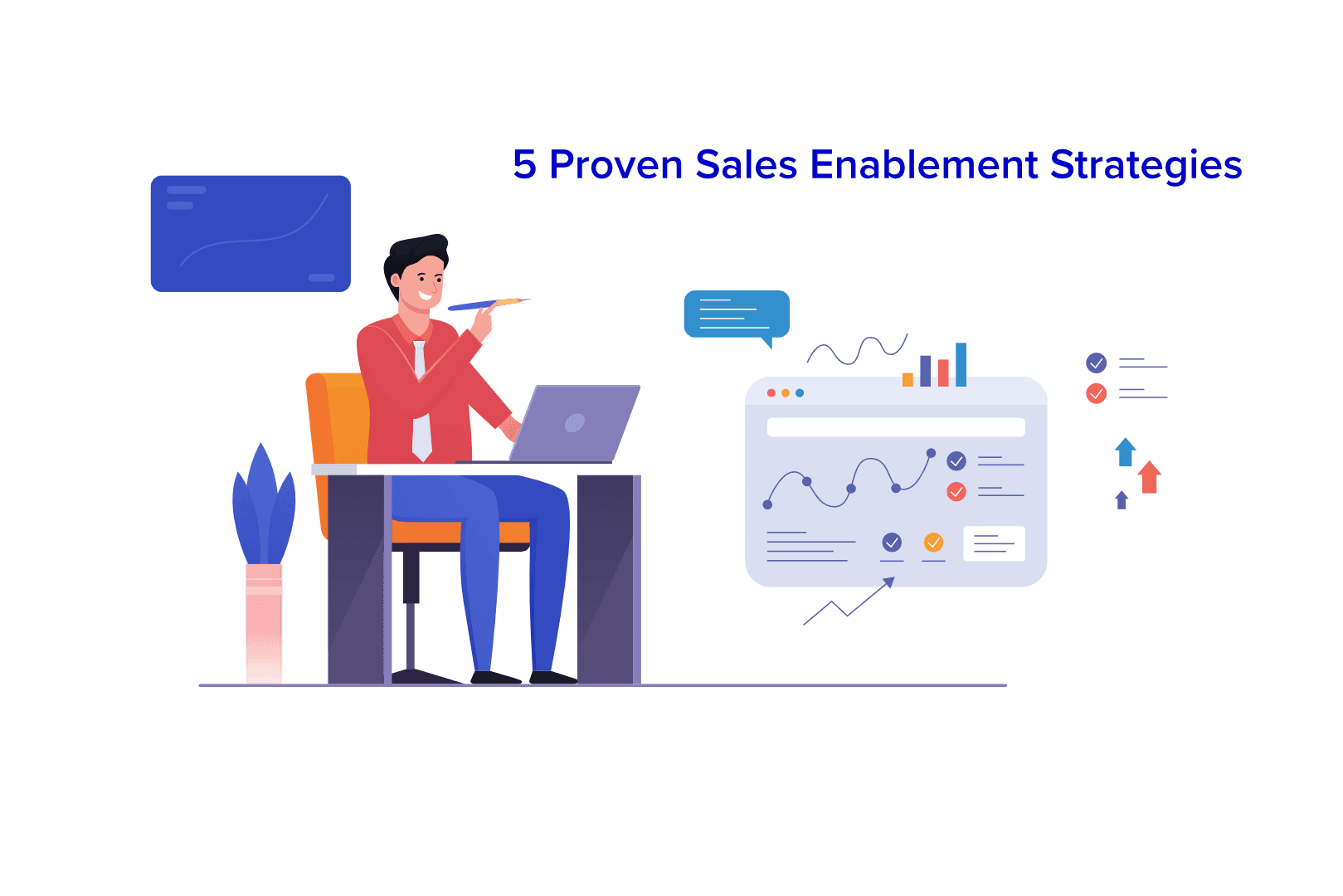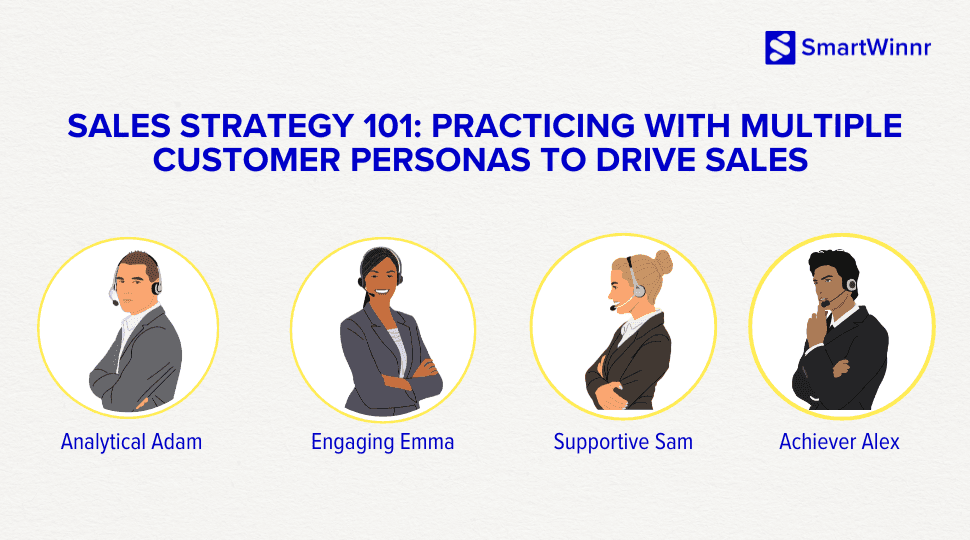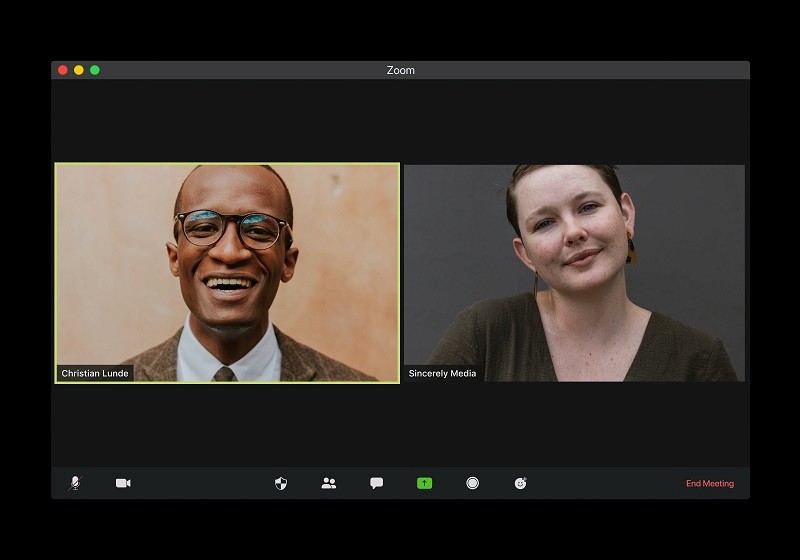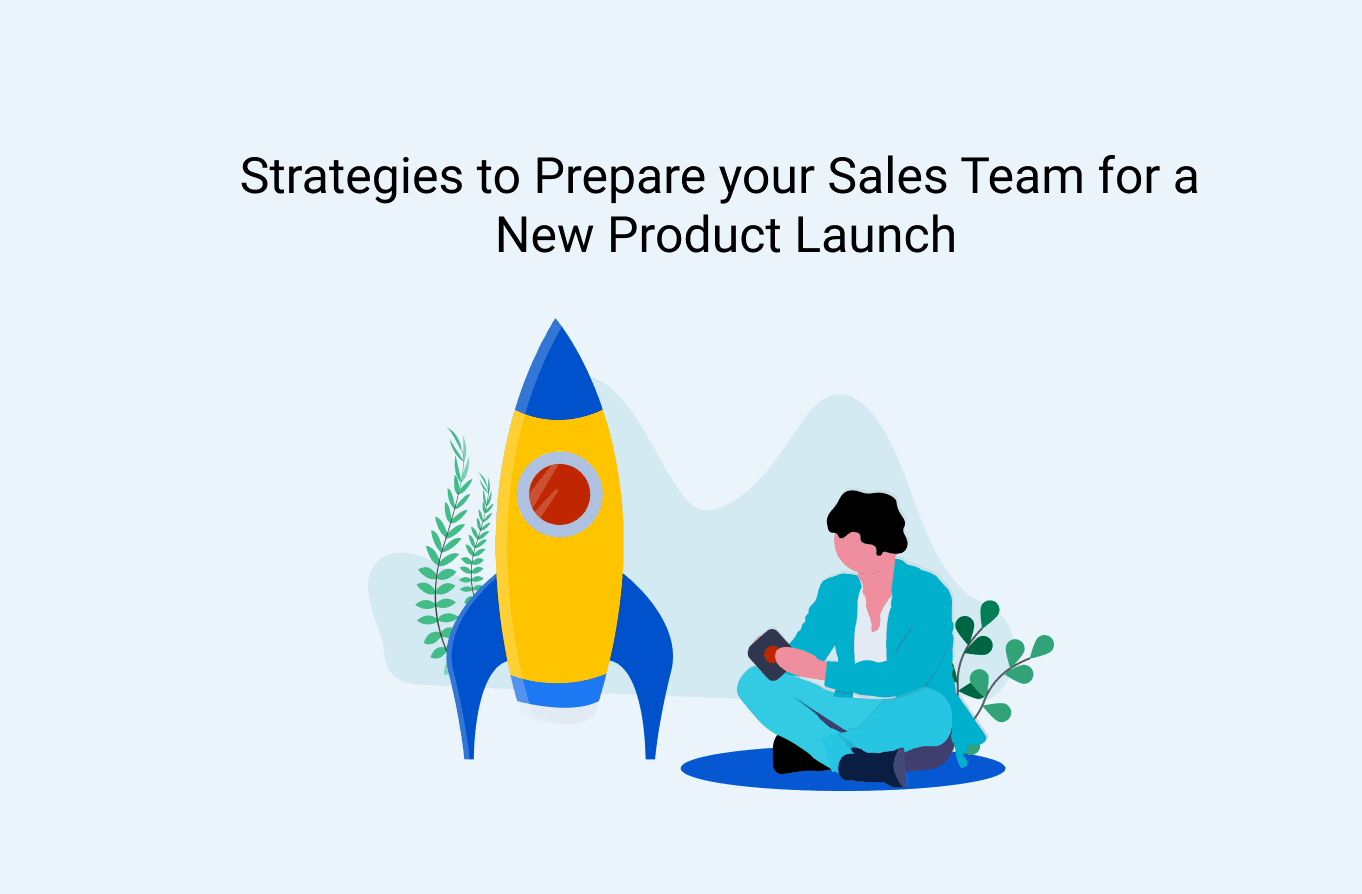In our experience of dealing with a lot of sales leaders across the world, one of our favorite questions that we love to ask them is– “What do you think is the single most important selling skill for a salesperson?”
And the responses vary:
Some argue that prospecting skill is the single most important skill. Their rationale is that if you don’t have anything in the pipeline, no other sales skill matters. Fair enough.
Others argue that closing skill is really what matters the most. They espouse, “Give me a good closer and sales will increase”.
And some others say that questioning skill is the most important skill. Their thinking is that if you can uncover the customers’ needs, the rest of the sale will follow more easily.
While we agree that all of the above skills are important, we’d argue that there is one skill that sets apart the top salespeople from all others. It is the skill of active listening (like really listening, to the other person).
Why is ‘Active Listening’ the most important skill in Sales today?
Many times, salespeople listen only to hear what they want to hear. Or they listen long enough to interrupt and correct the speakers ‘wrong’ perception. Or they listen while focused on their agenda.
In today’s world which is hit by a pandemic, people’s buying preferences have changed drastically. Now the buyers are very conscious about where they invest their money and who do they speak to. In a situation like this, it’s only imperative for the sales reps to change their selling approach to a more buyer-focused approach. This is where active listening helps.
When salespeople truly listen (actively listen) to their buyers, they will be able to put their own agenda on hold and try to understand the buyer’s viewpoint. By precisely understanding the buyer’s viewpoint, they will be able to,
Connect better with the buyer
And this is exactly why great listening is the single most important skill for sales reps to be top-notch salespeople of today.
5 Principles of Active Listening
Here are 5 principles that your salespeople need to incorporate into their sales practice in order to put active listening into action. But be forewarned: while these may sound simple, it requires a great deal of practice and self-awareness.
1. Truly listen to the prospects
Unfortunately, salespeople are commonly thought of more as talkers than listeners. If your customers view your salespeople this way, they may be turned off from your company and may be less likely to make a purchase.
To counter this issue, ask your salespeople to be in the moment when talking to a customer so they can genuinely listen and understand the feelings that the customer is conveying. By paying close attention to what the customer is saying and why they are saying it, your salespeople will be able to see the situation from the customer’s perspective. Once they understand that perspective, it becomes much easier to sell.
Here are some tips that will help your salespeople to genuinely listen to customers:
Set the script aside – There’s no doubt that the sales scripts are extremely helpful and your sales reps should have the scripts. But they should not reference it when a customer is talking. Instead, salespeople should focus on having a real conversation with the customer rather than reading a prompt off a piece of paper.
Block out distractions – Salespeople should focus completely on listening to the customer when they are talking instead of paying attention to anything else, including preconceived ideas about what the customer might say next.
Try to understand the complete message being sent – If your salespeople talk to customers in person or via video conferencing, they should observe non-verbal clues that uncover a customer’s true feelings. If they talk to customers on the phone, they should observe auditory clues like the tone of voice and language.
2. Repeat back what was said
When the customer makes an important statement that expresses their wants or objections, it is important for the salesperson to repeat that statement back to them.
One option for doing this is to simply repeat the statement word-for-word. However, this option can make a salesperson seem like they lack basic understanding if this method is overused. So it should be used sparingly.
To avoid repeating the customer’s statement word-for-word, your salespeople can either paraphrase the customer’s statement or put the statement into their own words. Choosing one of these options shows a deeper comprehension of the customer’s needs and feelings. But here, the reps also need to ensure that they do not stray too far from the customer’s original language.
3. Confirm for clarity
After a salesperson repeats back what a customer has said, they must confirm that they repeated the customer’s thoughts back effectively.
To accomplish this, here are a few things the salesperson can say immediately after repeating the customer’s thoughts:
“Did I communicate that back to you correctly?”
“Do I correctly understand what you have shared?”
“Is that what you meant?”
If the customer says “no” in response to the confirmation question, the salesperson should clarify their understanding by asking the customer to more clearly explain what they meant, like this:
“My apologies for the misunderstanding. Could you explain what I missed?”
Then, the salesperson should listen attentively to discover what they missed. Once the customer explains what was not understood, the salesperson can repeat the customer’s thoughts back and confirm for clarity again until a mutual understanding occurs.
This step can take a few tries to master, but once a salesperson gets good at it, they will automatically build trust with customers more easily.
4. Try to read between the lines
Sometimes to understand the customers better, your sales reps have got to read (and listen) between the lines. Because there is a possibility that there are hidden details in what your customers reveal.
So, the sales reps should try to find out not just what is being said with the actual words but use their broader observational skills to piece other communication components together.
Here are some examples of reading between lines of the customers
Customer: "Just whatever you think is best."
Translation: "We don't know what we need, feel a bit insecure about it, and are hoping you'll do all the thinking for us."
Customer: "We'll know it when we see it."
Translation: "We don't know what we want just yet."
Customer: "We don't think people will like that particular element; we just want this..."
Translation: "We're going to ignore stats and common sense and make huge assumptions on what we think will work because we think we know best."
Customer: "We have no budget for this one, but it's a great opportunity to gain exposure."
Translation: "We need to gauge how much you will do for free on future projects."
5. Ask the right follow up questions
Once the salesperson has listened carefully to the customer and understood their situation, it is time for him to ask relevant follow-up questions in order to come to a common agreement on how to solve the customer’s problem.
To succeed at this step, the salesperson must ask an open-ended question that encourages the customers to share more about their objections, wants, or needs. When the customer has an opportunity to do this, there is a good chance that they will give the salesperson more information to work with and use to make a sale. The key to making this happen lies in active listening the entire time the customer is answering the open-ended question.
How can you Instill Active Listening skills in your team?
To help your salespeople learn how to incorporate these 4 principles effectively in their selling, you can try:
Group role-playing activities – Have your salespeople sit in a circle. Then, have one salesperson act as the customer and begin a sales conversation. Have the other salespeople in the circle offer their comments, one at a time, to keep the conversation going. Encourage your salespeople to make use of active listening throughout this process, and provide feedback along the way to help them understand when they are right and wrong.
Coaching and/or training sessions – Obviously, your salespeople cannot actively listen if they do not clearly understand the steps involved. Train or coach them to make sure they know how to perform each step, and answer any questions that they come across.
Call reviews – Sit down with each of your salespeople for one-on-one call reviews. Providing positive feedback as well as constructive criticism so they can improve their active listening process and sell more effectively.
Tips for sales reps to actively listen
Here are some tips that you can give to your sales reps to help them inculcate active listening in their selling:
Listen with eyes: Sales reps should maintain eye contact to establish and keep a better communication connection with the prospect.
Be aware of the body language: Sales reps should adopt an “open” listening posture during sales meetings. Encourage them to,
Lean in as you listen
Nod to express understanding
Smile
Don’t cross arms or legs in a defensive, “closed up” manner
Avoid the temptation to interrupt: Ask your sales reps not to interject features and benefits of your product or service while the prospect is explaining their need. There will be time to describe your solution later (if it really is the solution the prospect needs).
Don’t just hear the words: Ask your reps to not just hear the words of the prospect but truly listen for their underlying meaning.
Take notes: Ask your reps to note the important points in the meeting. This,
Ensures that they have a record of everything that was discussed during the meeting
And it also gives an impression to the prospect that your sales rep is trying to get every detail right
Repeat for understanding: Ask your reps to periodically say during the conversation-- “Let me make sure I understand what you’re saying,” and then repeat a key point the prospect has just expressed. Validating understanding shows a high level of concern and care.
Ask questions when necessary for clarification: Although frequent interruptions should be avoided, if your reps are truly unclear about something the prospect has said, ask them to ask for clarification. Ask them to avoid the temptation to piggyback that clarification with a premature sales pitch.
Benefits of Active Listening
When a salesperson utilizes active listening techniques, both parties (sellers and buyers) benefit in several ways. Here are some benefits of active listening:
The prospect feels heard, respected, and valued
The prospect may offer fewer and softer objections if the emphasis is on their need and to solve their problems, rather than the salesperson’s need to make a sale
The prospect will have greater confidence that the solution bought will truly address their needs
The salesperson saves time and frustration by being able to understand if there is a true “fit” between the solution offered and what the prospect really needs
The salesperson gains a reputation as a trustworthy solution provider
The salesperson makes more sales in less time due to being able to quickly channel sales efforts to more qualified targets
Final Words
While mastering the patience, determination, and concentration required to perform active listening may be difficult, it is an absolutely necessary skill for your sales team to learn. Start by having them implement the steps outlined in this post as soon as possible, and you should see sales results begin to improve.
Learn how corporate training got disrupted after the onset of the pandemic and what can you do to provide effective training to your employees in this virtual work environment
Learn about the skills that sales reps need to ace remote sales
7 Selling Skills that are Essential to Ace Remote Sales
Learn how to re-innovate your coaching program in 2021
Delivering Innovative coaching programs in 2021
Want to coach your salespeople into sales champions?
Read: How to coach your salespeople into sales champions?
Learn how to use historical data to drive better sales coaching conversations
Data-Driven Sales Coaching: How to use historical data to drive better sales conversations?
Learn about the role-play scenarios that prepare your sales reps to handle any sales situation
8 Sales Role-play Scenarios that will help Prepare your Sales Team to handle any sales situation
Looking for a sales training software that takes your sales training to a whole new level?
Explore SmartWinnr’s Learning and Gamification features. Learn how to run fun and engaging sales training and sales coaching for your team through SmartWinnr.
Curious to learn more about it? Book a demo today!



















































